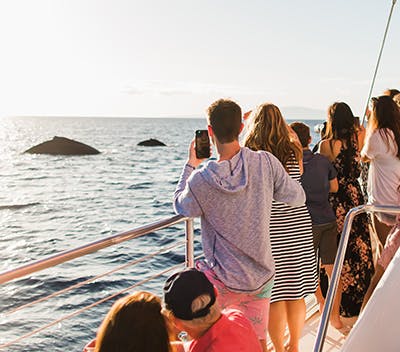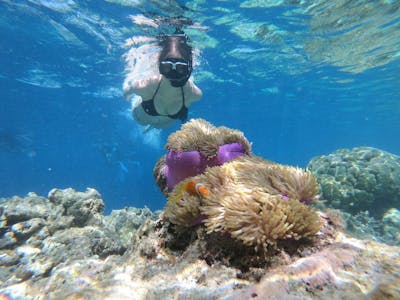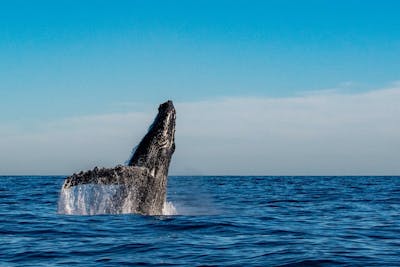Boat Tour Agency – We’re Family Owned and Committed to the Quality of Your Experience.
What Are The Basic Rules Of Sailing?
If sailing is in your vacation itinerary documents, then Kaupo, HI is a place you should consider. The remote district is at the heart of Maui County in Hawaii. It has scenic mountains and a wide coastline that is suitable for whale watching, snorkeling, and sunset cruises.
The district also lies west of Kipahulu, along the shoreline of Kahikinui. You can learn the basics of both towns via a short drive. The Pi’ilani highway has reserved its originality by remaining unpaved in some sections that lead to the ocean. The paved parts of the freeway connect the remote district to the rest of the island.
Kaupo, HI is a mixture of charming sceneries, from the extensive sea lines to the mountainous regions, that are reachable by a footpath. You can take your time to view the lava outcroppings and have a bite or buy tools at a
store immediately past mile 35.
A mile before marker 35 is a turnoff that goes towards Mokulau, which is near Kaupo town itself. There is a left turn on the highway that opens up a dirt road leading to the ocean. Just before the ocean, Hui Aloha church stands, and a cemetery.
Basic Sailing Rules 101
Sailing, like all racing activities, has several instructions or rules written on downloadable PDF pages and is due for review in 2024.
To avoid the possibility of collision with another craft or yacht, or not having any fun, it is advisable to follow all the rules stated by the organizer club and U.S. sailing. Here are essential rules to follow when sailing.
Be Aware of the Rules of Sailing
Watercourses have many simplified turning points where racing competitors meet for sailing. Flouting any principle or rules set when sailing at the meeting points presents the largest opportunity for collisions. If you are on the starboard tack, look at the craft starting. When approaching it in the opposite direction, it is fundamental to try to avoid it promptly.
The wind direction supports the rules taken by both the windward and leeward cruisers when sailing. If the wind blows perpendicular to the starboard boat, the simple sailing directions suggest it must change course to prevent colliding with the leeward tack in the clear opposite direction. The leeward craft has a right of way in such a scenario according to the rules.
If staring out on a course and tacking towards the sea or racing, the rules for sailing state that you have no power to force another craft out of the way in any direction. You must give way for the liners already on course.
Giving Right Of Way
From the basic rules written in pdf uploads used since 2016 in the world, and recently in 2021, boats already on the course have a right to overtake. Other boats on the course starting their tacking must not demand the right of way from the vessel already on course.
The liners given way must make maneuvers within seconds so that those starting their tacking have sufficient room to turn to avoid a collision.
When a port tack gains right of way when it fixes itself on a course, the rules require it to give sufficient passageway for other cruisers or a boat coming to the course from the port.
Do not overlap while on the Leeward Boat
When in an overlapped part in a clear course, and a sailboat appears on the leeward side and tries to force you out of the course, the rules give you a right not to move towards the no-go zone.
Liners on the leeward side, and are about two craft sizes in the said direction, have no right to force you out of a course to the no-zone part, even when at the time moving faster than you do.
Innermost Boat Has a Strict Rule to Turn First In a Turning Point
The rules also empower the inner boat in a turn to make the turning maneuvers first. Further, the rule has an exception that the overlap must exist before the lead sailboat tack goes into a four-boat length zone.
However, the basic rules of sailing do not give the same rights at the beginning of a race; the inner sailcraft does not have any right to turn first. The outer ones can take turns first after getting feedback and space
from the inner craft.
There Are Fines for Breaking the Basic Rules
Vessels should not touch the clear marks set by the competition committee when sailing. From the rules, the penalty for this is a 360° turn, which will delay your sail and deter your good sportsmanship.
Breaking any sailing regulations or rrs requires a fine of a 720° turn. However, the rule does not work for touching penalties stated above—used in 2017, 2021, and 2020. So, it is important to learn the regulations or basic rules before taking part in sailing.
Top sailing tour charters company in Wailea.
Watch the sunset on your private charter, luxury boat ride.
Looking at the best boat tour companies near Kihei?
Best whale cruise rides in Maui.







Tour Operator – We’ll Make Your Day.
If you are planning a trip to a tropical paradise, you might be thinking about going snorkeling to check out all the plants and animals that live underneath the surface of the water. You need to have reliable equipment when you go snorkeling, which includes a snorkel and a mask. Sometimes, your snorkel can fog up, making it difficult for you to see. Why does this happen, and how can you fix it?
Why Does a Snorkel Mask Fog Up?
A snorkel mask fogs up when water vapor starts to condense on the surface of the mask. If the temperature of the outside surface of the lens is different than the temperature on the inside of the lens, water will collect on the surface of the mask, making it difficult to see. You need to get rid of this condensation because you do not want to get lost, run into an object, or miss out on an opportunity to see something cool.
How Can You Defog Your Snorkel Mask?
There are a few ways you can defog your snorkel or prevent fog from developing in the first place. If you already have fog on your snorkel mask, you can remove your mask, spit on the mask, and wipe the condensation away. The surfactant in your saliva could prevent the fog from coming back. You should also make sure you have a mask that fits tightly against your face, which can prevent temperature differences from developing.
Get Ready for an Amazing Adventure
Make sure you prepare for your snorkel trip. You should have equipment that fits well and don’t forget to talk to a professional guide about how you can prevent your snorkel mask from fogging up.
Snorkeling Tours in Maui – See the Magical World Under the Surface.
Looking for Molokini Crater catamaran snorkel tours?
Best Maui private charter snorkeling tour and whale watching.
Want Kihei snorkeling trips near me?
Luxury Wailea-Makena snorkel cruise.






Sightseeing Tour Agency – Let Us Show You What’s Out There.
If you are planning a trip to the tropics, you might be thinking about signing up for a whale-watching trip. This is a great way to learn more about the beauty of marine life by seeing whales in their natural habitats. How long do whale watches last? And how do you plan your trip properly?
A Typical Whale Watching Trip Is 2 to 3 Hours
Typically, a whale-watching trip lasts between two and three hours. The guide will need to navigate the ocean, searching for different whale species. Depending on where your tour leaves from, it may be necessary to drive farther from shore. That way, you will be in the best possible position to see the whales. In addition, migration and feeding habits could play a role in where your guide takes you. Finally, your guide also needs to plan around the weather, as this will dictate your visibility from the boat.
Some Trips Last the Whole Day
There are multiple whale-watching tours available, and you might be interested in signing up for a trip that lasts the entire day. If you are in an area with multiple whale species, different whales might hang out in different parts of the ocean. If your trip lasts the entire day, your guide may drive to different areas so you can see different whales. Sometimes, these trips include a picnic lunch on a local beach.
Plan Your Whale-Watching Tour
Ultimately, every tour is different, so it’s really a matter of personal preference. If you have other things you want to do during your vacation, you may want to reach out to the guide ahead of time to see how long the tour will last. That way, you can plan your day effectively.
Whale Watching in Maui – We know the best spots.
Want to find whale tour agencies near me?
Book a spot on a Maui private whale-watching tour boat.
Top-rated whale watch cruise in Wailea.
The best place to whale watch in Kihei is in our catamaran at sunset.






Kaupo, Hawaii
Kaupo, located on the southeastern slopes of Haleakalā on Maui, is a hidden gem that offers a glimpse into a Hawaii far removed from its bustling tourist centers. This remote area is steeped in history, once a thriving community significant in the island’s early days. Its landscape is a dramatic mix of rugged coastline, steep cliffs, rolling hills, and expansive grasslands, making the drive to Kaupo one of the most scenic on Maui.
The area is a paradise for outdoor enthusiasts, with trails like the challenging Kaupo Gap trail that showcases the island’s diverse ecosystems and volcanic history. Visiting Kaupo feels like stepping back in time, with no large hotels or commercial developments, just a few homes and the historic Huialoha Church, a symbol of the community’s enduring spirit since the 1850s.
The people of Kaupo are known for their resilience and deep connection to the land, with a growing interest in preserving traditional Hawaiian culture and practices. Kaupo is more than a destination; it’s an experience that offers a rare opportunity to witness a side of Hawaii that few visitors see, reminding travelers of the diverse beauty and rich cultural tapestry of the Hawaiian Islands.
Learn more About Us Across the Web.